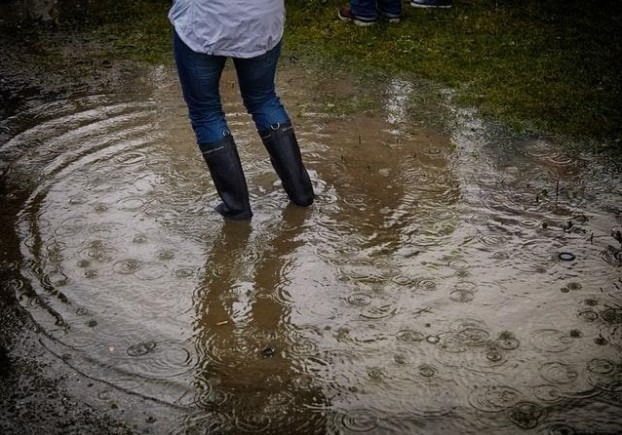With each spring season, people in Nashville go out to their gardens to begin the summer transformations. Flowers adorn the beds, new plants and shrubs installed, trees for shaded areas, and the structure itself inspected to ensure it is ready to withstand spring rains and the threat of heavy summer storms.
When grooming your landscape, there is more to the process than enhancing your street’s curb appeal. The process needs to be intentional with the idea of preventing your home from receiving possible water damages from impending floods that can develop with extreme weather, especially if you are in a known flood zone.
Landscaping the perimeter strategically helps to keep water from reaching your yard, traveling to your foundation, and finding its way into the house, where it floods the basement and creates damage. Once it enters the home, it is up to trusted professionals from a Nashville water damage restoration company to come to assess the property and begin resolution. However, another way is adequate and purposeful landscaping as one of the preventative measures you, as the homeowner, can take to keep the water out.
Preventing Water Damage from The Outside
Spring and summer generally bring Nashville heavier than regular periods of rain and storms. These can quickly produce flooding in areas, even those not explicitly designated as a flood zone. That puts homeowners at risk for water damage to their property if adequate measures are not taken to prevent entry into the home.
Precautions can be taken starting in the garden with strategic landscaping. These natural flood-resistant techniques mean to keeping the water from reaching the foundation and finding its way into your basement, where it will wreak havoc on the structure.
If you find yourself a victim of water damage, go to https://www.houselogic.com/finances-taxes/home-insurance/water-damage-home-repair/ for steps to take towards repairs. A first step when you move to a new property is checking where your address falls on the state’s flood map to learn the risk you are facing upfront and so that you can plan your outdoor space accordingly. Steps that can help include:
** Slope In the Garden
In order to keep water from entering the garden space, the ground needs grading so that it slopes away from the structure in each direction. The first step is finding the lowest and highest places in the perimeter where you will use as much or as little dirt as is needed to ensure the ground is sloped to move away from the house.
Taking the time to do this adequately will ensure that the water from even heavy storms will run away from the foundation and the basement. In this way, there’s minimal fear of an accumulation in the house or water damage to the property.
** Plants To Help with Soil Erosion
You can work with a local nursery to find plants responsible for keeping floods at bay. Indigenous vegetation will keep the soil from eroding, albeit allowing greater efficiency with drainage of the water.
Often, homeowners will add bushes and shrubs to their garden based on appearance instead of practicality and functionality. It is essential to pay attention to what type of greenery you’re adding and determine the key part it can play for your most significant benefit. Plant life can have many functional purposes, but helping you prevent water damage to the property is vital.
** Remember To Use Mulch
Mulch can help you direct water away from the house. In areas that you have purposefully graded to flow away from your property, add mulch to hold not only the soil packed but will keep the water retained in place. A suggestion is to keep mulch piles approximately 6″ from the house due to the moisture it maintains and the potential for rotting the property’s exterior.
** Plant A New Lawn.
A grass’s root structure is such that it has the capacity to absorb water. Again, as with the shrubbery, you want to find grass that suits your particular region. You can research the most effective option and also speak with local nurseries.
Once you have a full plot, you want to leave the grass at a particular height when mowing to avoid weakening the root structure. If that happens, the garden will be more susceptible to flooding and thus put your home at greater risk.
Many people do not realize cutting the grass too short can damage the lawn but make this a practice to save time and effort for fewer cutting sessions. It is much more beneficial to leave the grass at a specific height not only for the health of the grass but so the lawn has the ability to function practically as it’s meant to. Speak with a professional at the garden center to learn about your particular grass.
** Keep Drainage Areas Around the Driveway
Rainwater runoff is a common occurrence for those who have a paved driveway. Better options boast either spaced pavers or gravel but if you already have an existing pavement, put in drainage spots close to the area.
** Test Your Sump Pump
A basement should remain dry with a well-cared-for sump pump system. This means to direct any water from the basement out and away from the property. You need to make sure to test the pump regularly to ensure functionality and avoid water damage expenses.
If you do not currently have one of these, it might be wise to speak with a professional to come for an inspection to see if it might be something you could benefit from in your situation.
Final Thought
Everything a Nashville homeowner does to their property should have intention and purpose, including the landscaping in the garden. It might not be 100% foolproof if you have extraordinary circumstances at some point. But it staves off a majority of water damage problems you could face more often. Click here for guidance on what to do if your house floods.
For those instances where your home succumbs to the floods, it is essential to call in water damage experts in Nashville who can help you restore the property to what you knew. When the cleanup is done right, you can move back in with peace of mind.


